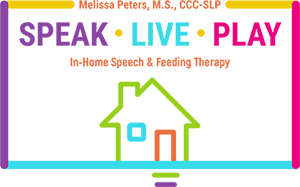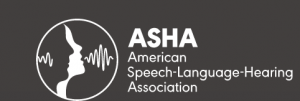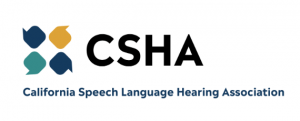Cleft Lip and Cleft Palate
Cleft lip and palate are splits or openings in the upper lip, roof of the mouth, or both. The condition results when the facial structures in a developing baby do not close completely. Cleft lip and cleft palate are common congenital disabilities that are often associated with inherited genetic conditions or syndromes. While the typical cleft lip and palate are visible after birth, a kid can have a submucous or hidden cleft palate that develops in the mucous membrane covering the cleft.
While having a child born with a cleft is upsetting for parents, doctors can quickly correct the condition. The condition is corrected through a series of surgeries that restore normal function and achieve a normal appearance with the least scarring.
Causes of Cleft Lip and Palate
According to the latest studies, cleft lip and palate is one the most common congenital disabilities in the United States. The condition develops early in the pregnancy, and the experts in this field have not yet established its cause. However, the researchers agree that the following risk factors play a significant role in the development of the condition.
- Genetics
- Diabetes during pregnancy
- Smoking during pregnancy
- Taking some medicines while pregnant
- Using drugs or alcohol during pregnancy
- Poor prenatal health care
Testing for Cleft Lip and Palate
At birth, doctors will see a cleft lip and cleft lip. The condition can also show during the ultrasound before birth, although this is sometimes difficult. Even at birth, the doctors may not always see the condition, especially in the submucous region. However, parents with a hidden cleft report that their kid has a weak suck or is taking too long to feed. The breastfeeding mothers also report milk coming out of the kid’s nose. A kid with a submucous cleft also experiences breastfeeding issues. The kid tends to have a bifid uvula with a split in it. The bifid uvula is a piece of tissue hanging in the back of the throat.
When you notice this split, talk to your doctor to do a further assessment and diagnose the condition early on. In other instances, this kind of aperture might not be apparent until your baby starts speaking. It can appear that his speech is coming out of his nose. The condition could indicate that the child has a cleft lip or palate. If the kid does have a cleft, you ought to have her hearing evaluated. Your baby may struggle with ear fluid and develop ear infections. Babies with a cleft palate are more likely to develop this than those who have a cleft lip.
Cleft Lip and Palate Symptoms and Signs
Cleating signs vary depending on several variables, such as the kind, intensity, and if the lip and palate are affected. Individuals with cleft lip and cleft palate may have issues in one or more of the following categories. Usually, a split (cleft) in the lip or palate is immediately identifiable at birth. Cleft lip and cleft palate may appear as:
Problems when with eating
Food and liquids can travel from the back of the mouth into the nose if there is a hole or separation in the palate. Luckily, there are customized infant bottles and nipples that aid in maintaining that the fluid flows directly to the stomach. To guarantee that kids with cleft palates get enough nourishment while waiting for surgery, they may need to wear a customized palate.
Loss of hearing and ear infections
Due to a higher propensity for inner ear fluid accumulation, kids with cleft palates are more likely to get ear infections. Sinus infections can result in hearing problems when not managed. Babies with a cleft palate usually require the placement of special pipes in their eardrums to help fluid drainage to avoid the development of this occurrence.
Speech issues
Speaking difficulties may also occur in individuals who have cleft lip and cleft palate. The voices of these kids don’t carry well, they can sound nasal, and their speech can be challenging to understand. Others will require the kid to work with a speech-language pathologist to overcome their speech issues.
Dental issues
Babies with clefts are more likely to experience more cavities than typical, and they frequently have missing, additional, deformed, or misplaced teeth that need dental and orthodontic care. In addition, an alveolar ridge deficiency is common in kids with cleft palates. The bony upper gum that has teeth is called the alveolus.
Treatment for Cleft Lip and Palate
When your kid is diagnosed with a cleft lip and palate, they often need services from several professionals or a craniofacial team. The team includes experts, including speech-language therapists, plastic surgeons, orthodontists, dentists, nurses, social workers, audiologists, and dietitians.
The kid will work with the team for a few years to correct the disorder. The surgeon works to repair the cleft by closing the cleft lip or palate. Other experts, including the orthodontist and dentist, help in straightening the kid’s jaw and teeth. The kid will also work with a speech-language pathologist to help in the speech development and how the kid feeds. The expert will also help with how the kid feeds and swallows. On the other hand, an audiologist will help in testing the kid’s hearing. The team of experts works in congestions to ensure that your kid has the best start in life.
How a cleft affects speech
A cleft palate can have a variety of impacts on a person’s capacity for communication and speech. The severity of a kid’s cleft is not always a reliable indicator because there is a wide range in how their speech develops. It becomes that a kid is affected when they begin to talk. Kids with a cleft that impairs their soft palate (the area at the back of their throat) may have speech issues, including nasal-sounding speech, because of the soft palate’s inability to seal off the mouth from the nose when talking, air escapes via the nose as a result. We call this condition velopharyngeal impairment (VPI).
Similarly, many consonant sounds, such as s, z, and sh, which involve putting the tongue on the palate to form the sound, are challenging to produce if there are still holes (fistulas) in the palate. Some dental sounds, like f and v, may be harder to pronounce if teeth are lacking or placed improperly. As the kid ages, he will learn how to produce various noises. Kids (with or without a cleft palate) will produce distinct sounds at various ages. Parents may only become aware of speech problems when their kid gets older.
It’s possible that while you have no trouble understanding your child, others have a more challenging time. When a toddler is very young, this isn’t a big problem, but if they want to start school and socialize with others with confidence, it is crucial to address the issue of cleft lip and cleft palate. When a kid has hearing impairments, their speech problems may get worse because they cannot hear themselves speak or hear others, making it hard for them to model proper word pronunciation. Any speech problems your kid may have should be identified and treated by the cleft experts as soon as possible.
More than half of all kids with cleft lip and palate require the services of a Speech and Language pathologist at some stage. At roughly 18 to 24 months old, the kid will get an evaluation and another one when they reach the age of 3 years. Babies with cleft lips are considerably less likely to experience speech issues, but you will need to speak to the experts if you are worried about this.
The goal is for kids to speak intelligibly (understandably) by the time they are 5 to 6 years old so they may go to school ready to engage fully in lessons and interact with their classmates. While many kids only require SLP when they’re younger, some continue to require assistance as they age. Depending on the kid’s requirements, how much and how it is administered will vary; if you have questions, see your speech and language therapist. Surgery is an excellent option to lessen the quantity of air that escapes from confident kids’ noses when they talk. This type of operation is referred to as secondary speech surgery, which may involve a pharyngoplasty or pharyngeal flap.
What does Speech and Language Therapy Involve?
A speech and language pathologist will often do the kid’s initial evaluation between the ages of 18 and 24 months and a second evaluation between the ages of three and five. These evaluations take into account your baby’s spoken language in addition to how well they comprehend words. While it can appear like the therapist is merely playing games with your kid during these sessions, this is an essential step in the diagnostic process that allows for a more accurate evaluation of the child.
The SLP will recommend additional therapy if the evaluations reveal that a baby has speech issues, such as direct therapy and teaching you skills to support your child’s speech development at home. The Expert will also liaise with the kids’ teachers to ensure they can get support outside SLP scheduled therapy sessions.
What can you do at home to help?
All babies, not only those with unusual speech, need to be encouraged to develop their speech and language. The following tips will help parents, guardians, and other family members to take part in helping kids with this condition. Encourage your infant to babble with certain sounds from a young age, prominent syllables like p, b, t, and d. As you produce these sounds, ensure that they see your mouth and lips.
As your kid grows and begins to speak, use familiar terms in songs and games to assist them in practicing specific sounds, such as “baa-baa black sheep” for the letter b.
Play activities or sing with the kid that teaches them to use their mouths for breathing instead of their nose. Every time you play with your baby, talk to them. Encourage children to pay attention to their lips and mouth while they talk by using short phrases and repetition of crucial words. When your baby tries to speak to you, repeat the words and sounds they use correctly. However, avoid criticizing them or “over-correcting” them because doing so might cause them to feel uncomfortable speaking to you.
Using your baby’s words in your response may aid in their language growth and ensure that they comprehend how these words work together. Use the correct words in your response, such as “yes, mommy is over there,” if your kid is attempting to say “mommy” but is having trouble pronouncing the “m” sound.If your kid is still having trouble producing new sounds, have patience. Children without clefts also need time to develop new sounds.
Give your kid the opportunity to speak. Avoid guessing what they’re going to say, completing their sentences, or telling them to use specific phrases since doing so could make them feel pressed for time or prevent them from speaking altogether. After they have finished speaking, please elaborate on what they said. For instance, if your child says “mommy vehicle,” you may answer, “Yes, there is mommy’s vehicle.”
Talk to your kid’s speech and language therapist if you don’t hear any improvement because some kids won’t be able to create particular sounds physically. It could just be that your kid requires further surgery or a different kind of treatment. Avoid forcing a kid to attempt a sound they are unable to create.
How to prevent cleft lip and palate during pregnancy
Following the results of a new study, if the mom takes folic acid supplements early in her pregnancy, the risk of a baby being born with a facial cleft is significantly reduced.
The findings of Dutch researchers also suggest that pregnant women who eat diets heavy in meat and little fruits may raise the likelihood that their unborn children may have cleft lip and palate.
Conclusion
Most children with orofacial clefts do well and lead a healthy life with treatment. Some children with orofacial clefts may have issues with self-esteem if they are concerned with visible differences between themselves and other children. Parent-to-parent support groups can be helpful for families of babies with congenital disabilities of the head and face, such as orofacial clefts.
With proper treatment and therapy, kids with Cleft Lip and Palate do well and lead healthy lives. More often, kids with orofacial clefts have an issue with self-esteem when they compare themselves with their peers. However, parent-to-parent support groups and counseling can help them overcome these challenges. Your kid must have confidence in their speech and language development, so don’t forget to congratulate them on and recognize their accomplishments! Give kids encouragement when they achieve a milestone or pronounce a word or sound perfectly so they know what they did well and can repeat it. Besides the cosmetic results from surgeries, speech therapy also assists in correcting nasal-sounding speech. Regular follow-up visits to speech-language pathologists are also crucial to preventing ear infections and speech development.
For specialized care and support, consider reaching out to Speak Live Play, a trusted therapist in Cleft Lip and Palate treatment. Encourage your child’s speech and language development journey today!



